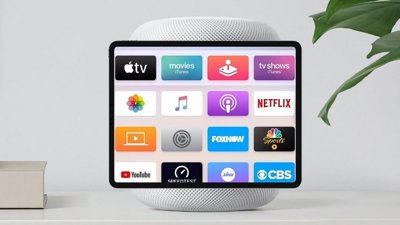The long-rumored "Apple Glass" may take much longer to arrive than previously thought, with it now not expected to arrive for several years.
The Apple Vision Pro has been a major first step for Apple's mixed reality device ambitions. However, in the pursuit of lighter and more powerful hardware, rumors of augmented reality smart glasses have persisted.
Though development is apparently still ongoing, it may not arrive anytime soon.
According to Bloomberg on Sunday, it's still very early in the development of the smart glasses. The intention is for them to be lightweight spectacles that provide AR functionality.
There have been speculation that Apple could bring out the smart glasses in a few years, this includes potential launches by 2026 or 2027 at the earliest.
This may be a very optimistic view, if the report is to be believed. Mark Gurman says that no-one he's spoken to within Apple believes the glasses will be ready for release in just a few years.
Gurman adds that it is probable that Apple will spend a few more years trying to prove the AR glasses are viable. He bases this on how the Vision Products Group has thousands of employees, and is continuing to hire.
An even longer wait
The rumors of Apple's AR smartglasses have been around for almost as long as the headset versions, with rumor stories spanning half a decade.
The idea of Apple Glass is to create a headset reminiscent of a pair of spectacles, with little additional weight or mass. Users will be able to use them as regular spectacles but with the added prospect of AR elements appearing in their vision.
Such a product is much harder to develop than the current headset-based device for many reasons. Aside from added mass, Apple would also have to come up with a way to enable AR to work despite the users needing to actually see the world around them, not in a composite as with the Apple Vision Pro.
Early versions suggested a spectacles-like device could be used, with an iPhone slid in to work like a screen. Later, rumors proposed that it would work more like actual spectacles.
Over the years, it has been claimed that AR glasses have entered various stages of production. In January 2023, the work on Apple Glass apparently stalled, so that engineers could instead focus on the hardware launch of the Apple Vision Pro later in the year.
 Malcolm Owen
Malcolm Owen




-m.jpg)


-m.jpg)






 Christine McKee
Christine McKee
 Chip Loder
Chip Loder
 Oliver Haslam
Oliver Haslam

 William Gallagher
William Gallagher
 Amber Neely
Amber Neely

 Andrew Orr
Andrew Orr






8 Comments
Waiting for price drop, or better yet, price drop combined with factory refurbished availability.
Sorry, but I don’t buy the author’s claim that AR glasses would be harder to build than the current Vision Pro. Quite the contrary: it would need none of the VR-specific, super high resolution screens nor the heavy computing needed to create a virtual reality that includes actual reality as the Vision Pro needs to.
Imagine a pair of glasses that included sensors/cameras and a small projector to superimpose generated content onto the actual reality seen in the glasses. Add small batteries in the temple areas, a networking chip, and you’re done. For a crude example, see the 11 year old attempt by Google. Unlike Google, Apple should offload all computing to the iPhone, thus allowing for much longer battery life than Google Glass (which was already on par with what Vision Pro with a tether 10 years later!)
Apple has a decade of technical improvements to draw on as well as its vaunted hardware/software integration to outdo what Google did over a decade ago! The only real technical challenge is the networking needed to send sensor data to the iPhone and to get the display in the glasses updated in a timely manner.
There’s no reason Apple AR glasses couldn’t exist today. Tim Cook just didn’t have a clue as to what his customers actually want and, instead, let his techno geeks run wild.